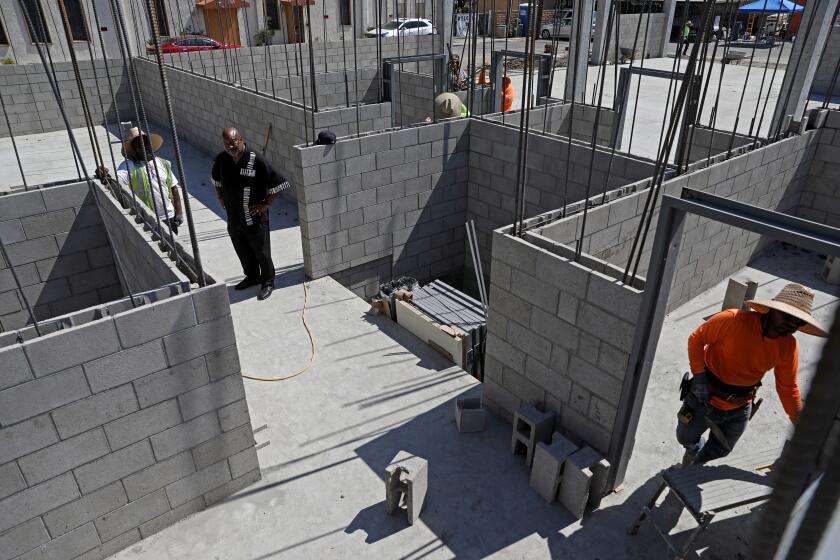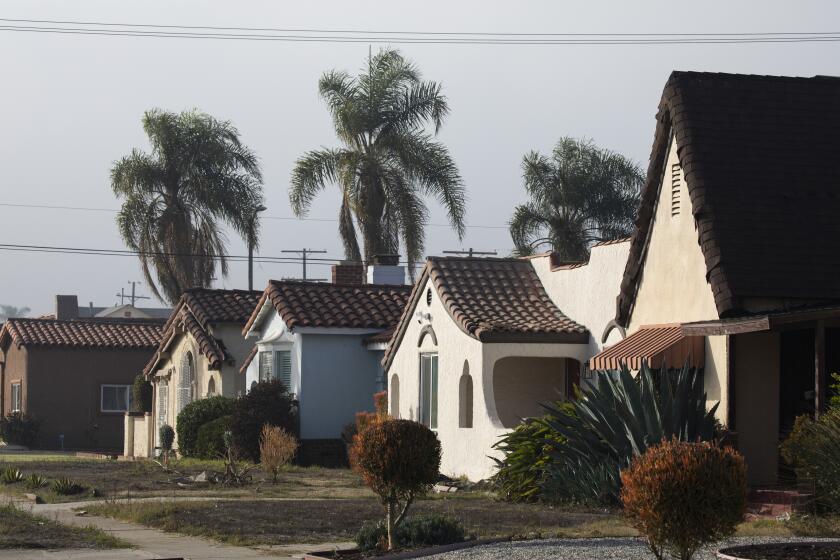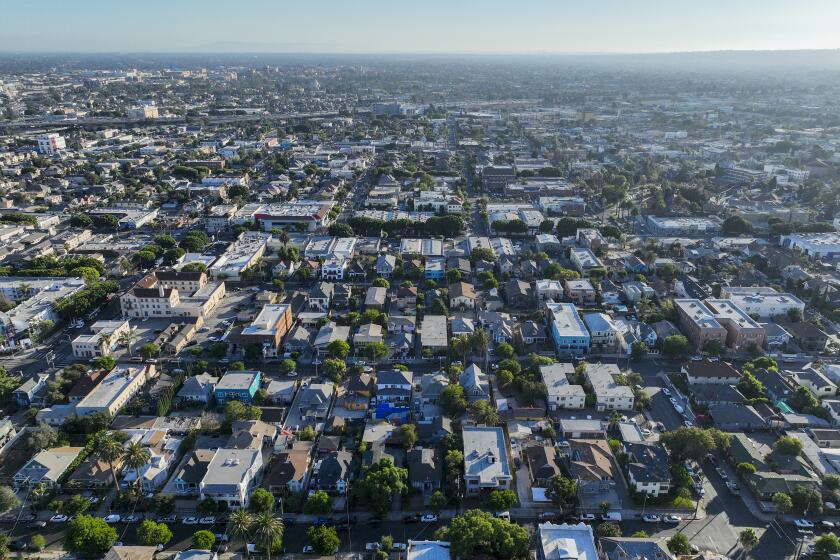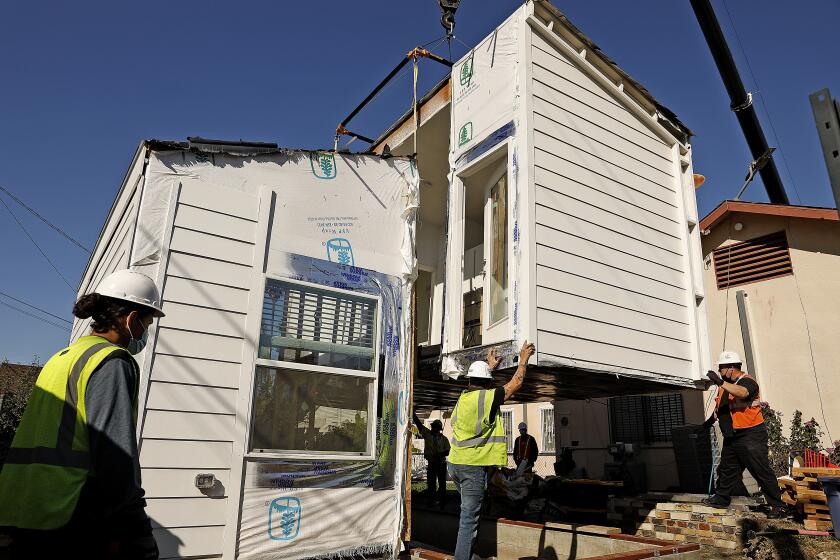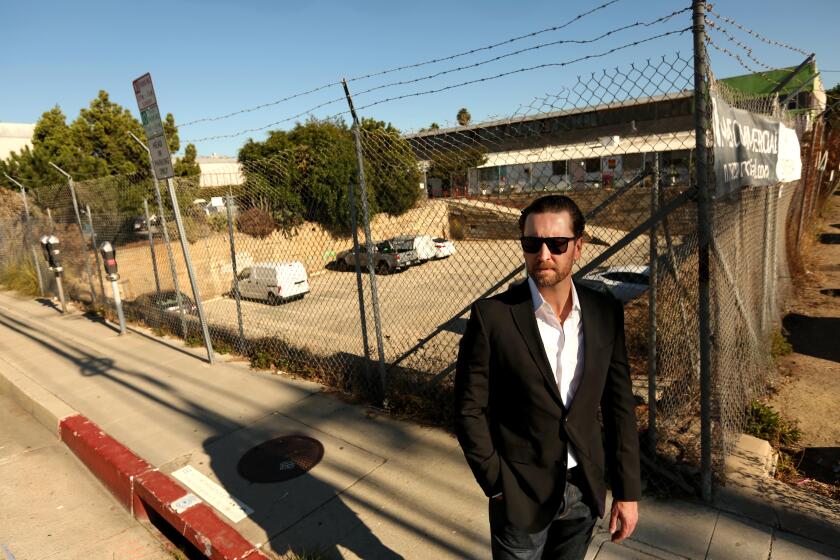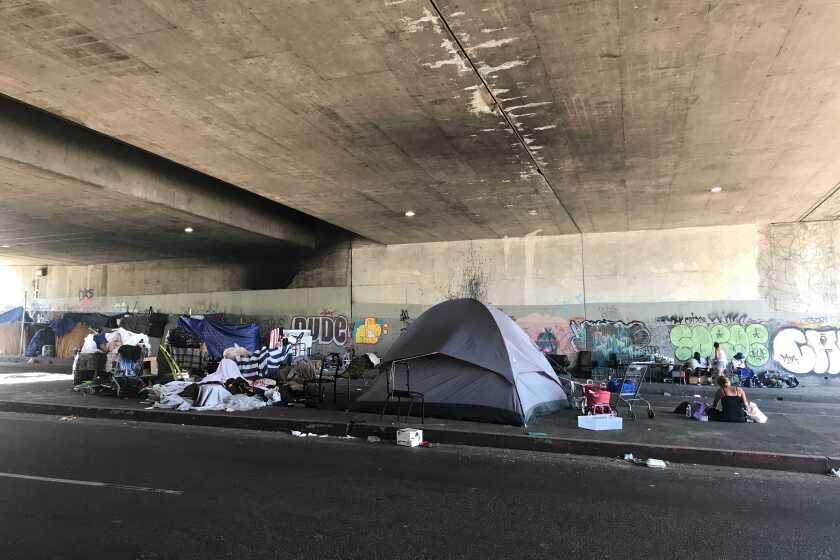Stop worrying, NIMBYS â affordable housing shouldnât squash your property values
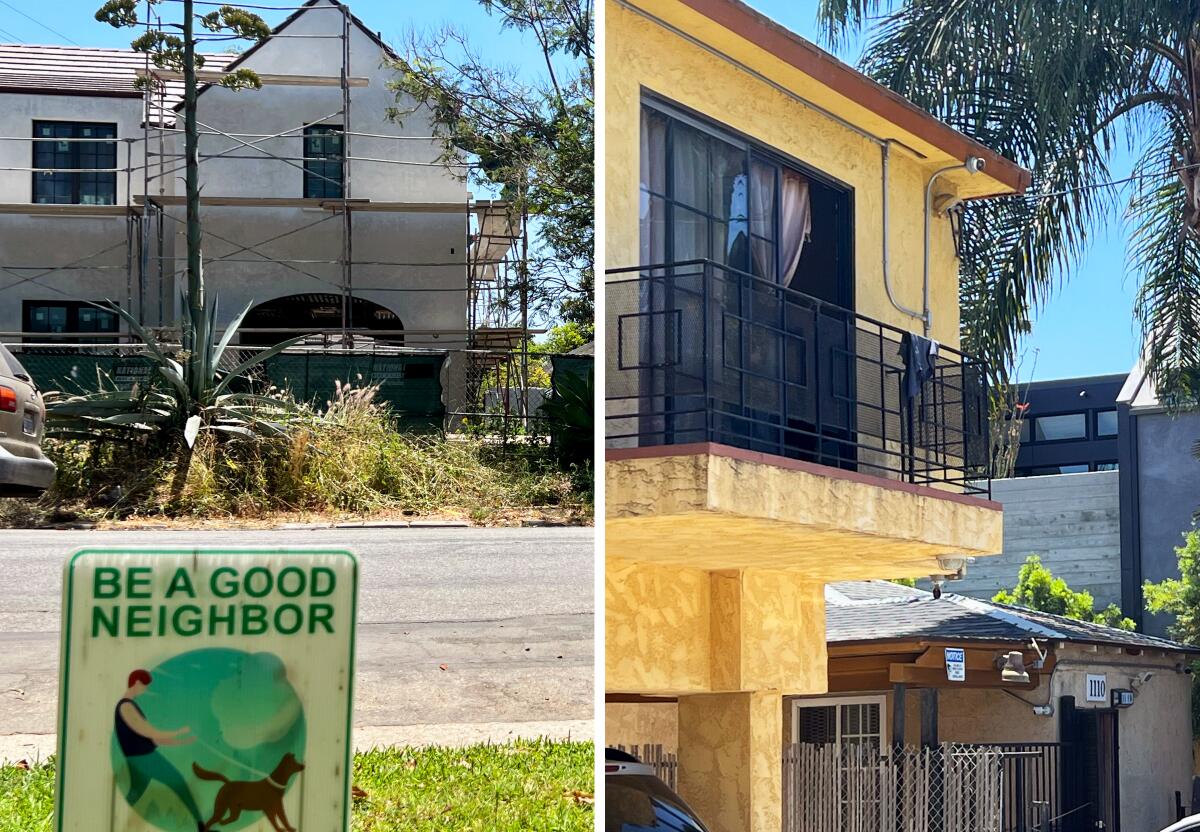
Just down the street from my familyâs Venice home, workers are smoothing plaster inside a 6,000-square-foot new house whose owners, a young couple from the Bay Area, will soon have a property worth $7 million.
Across from that mansion-to-be is an 11-unit apartment building whose cracked stucco could use a new coat of its mustard-colored paint. The families that live there come mostly from Oaxaca, Mexico, and many of the adults work as employees at restaurants in Venice and Marina del Rey.
Los Angeles is a city historically segregated by race and class. But in our slice of the city, multimillionaires in newly built villas live side by side with the affordable apartments of the people who clean their pools, watch their children and cook their El Pollo Loco orders.
My familyâs neighborhood may be an outlier â or moving inexorably toward full gentrification â but at least for the last three decades, it has also served as vibrant proof that the notion that affordable housing lowers property values is overblown, if not flat-out wrong.
A handful of companies are building homeless and affordable housing using private-sector financing on a scale that rivals developers who rely on tax credits, state bond money and other government subsidies.
That enduring belief has contributed to widespread not-in-my-backyard opposition that makes building affordable housing in higher-income areas so difficult.
âIt is total NIMBYism,â said Adlai Wertman of USCâs Marshall School of Business. âItâs âI want to help poor people, just not in my neighborhood.ââ
Our neighborhood provides plenty of anecdotal evidence that mixing housing and income levels doesnât sink property values. In a four-block area, low- and moderate-income apartment buildings and multifamily units are sprinkled among six mega-mansions and older, middle-class single-family homes like ours, which was built in 1924. The lower-income units are not government-subsidized.
In the mustard-colored building, Marin Ceja, a self-employed pool technician, pays $2,000 per month for his two-bedroom apartment, more than $3,000 less than the average for a two-bedroom rental in Venice. Assuming Cejaâs across-the-street new neighbors financed their home with 20% down, theyâll be paying $20,000 per month.
California lawmakers are considering bills to address the housing shortage thatâs increased costs of living and worsened homelessness in the state.
The presence of lower-cost multiunit buildings hasnât driven down the resale value of homes. The average sale price of homes in Venice has increased by a million dollars in the last 10 years. In the last year, while home prices have declined by 7% countywide, in our neighborhood they rose over 4%.
Numerous studies show our corner of Venice, east of Lincoln Boulevard and north of Venice Boulevard, is not unique. Low-income housing has a positive impact, or no impact, on neighborhood house values, according to a majority of studies reviewed by A-Mark Foundation, the research and policy nonprofit I lead. Two studies concluded that low-income housing had negative effects on property values in some specific cases.
One 10-year study that looked at property values in the least affordable housing markets in the U.S. â 45% of which were in California â found that newly built low-income housing had no effect on state property values.
Thatâs been the experience of affordable housing builders too. Loren Bloch, who spent decades developing affordable housing in Southern California, told me that when he insisted on building 22 low-income housing units along with 37 market-rate units in Oxnard in 2001, other developers thought he was crazy.
New legislation in Sacramento encourages urban and suburban housing while discouraging exurban sprawl that paves over wilderness and invites fires and floods.
âBut people sucked them up,â he said, âand they lived side by side together.â
Oxnard real estate prices around Blochâs development have risen by double digits since then.
Tom Safran spent four decades convincing wary, lawyered-up residents that mixed neighborhoods work for everyone, so long as the building quality is high.
After finally winning city approval for 154 affordable units in Del Rey on Culver Boulevard, Safran faced off against a handful of neighbors whose lawsuits delayed construction two and a half years, before they settled on 124 units â which more than 1,800 people applied for in 2013.
His company faced similar opposition to his Thatcher Yard development in Venice, despite bringing in Steve Giannetti, who designed Lady Gagaâs Malibu spread, as architect. Residents fought to scale back the project from 160 units to 98, overruling Safranâs contention that as long as valuable Venice land was available, it should house the most diverse kinds of units, and the largest number of them, that was reasonable.
The state still suffers from high rents and a disproportionate homeless population. But there are signs of progress in Los Angeles, San Diego and other cities.
âCommunities work best when they have a range of incomes,â Safran told me. âWhen people who teach school or do policing or work behind the counter in the dry cleaners donât have to drive an hour and a half, it creates a more successful society.â
In Los Angeles County, home prices have risen twice as much as wages in the last decade, and the lack of affordable housing drives homelessness, poverty, population loss and glaring income inequality. Thatâs why Gov. Gavin Newsom and L.A. Mayor Karen Bass have both called for every neighborhood, rich, poor or in-between, to accept affordable housing.
But the more upscale the neighborhood, the more resistance there is. Upper-income residents who stand in opposition wield a variety of excuses â increased traffic (Manhattan Beach), overcrowding (Redondo Beach), or potential harm to migrating mountain lions (Woodside, really?).
âWeâll never get affordable housing in the Palisades,â Wertman said of the upscale Democratic-voting neighborhood. âThe world will end first.â
Former President Trump, as he often does, said the quiet part out loud in 2020 when he blocked an Obama-era rule intended to reduce racial segregation in communities. âI am happy to inform all of the people living their Suburban Lifestyle Dream that you will no longer be bothered or financially hurt by having low income housing built in your neighborhood,â Trump tweeted at the time.
Developers in Santa Monica are planning 4,500 new apartments under a little-known state legal provision â and the city might not be able to stop them.
But even studies looking specifically at âmore affluentâ neighborhoods have found the fears of affordable housing tanking housing prices and increasing crime are unfounded. A 2022 UC Irvine study found that on average in such areas in Orange County, home values increased following the opening of affordable housing.
âOverall, the data on actual home sales do not support the claim that affordable housing depresses local home values,â the authors concluded.
A 2019 Stanford University study showed that housing built using low-income housing tax credits led to a decrease in crime in lower-income neighborhoods and âdoes not increase crime in high-income areas.â
The Stanford study, unlike several others, did find that low-income housing built in higher-income neighborhoods decreased property values by 2.5%. That could be a result of increased housing supply, said Gary Painter, professor of social innovation at USC, or of residents preferring not to live near multifamily buildings. No studies have disentangled the impact of these two possibilities, he said.
Back to my neighborhood, where below-market rents mix with high-dollar mortgages and taqueros live beside techies. The diversity is not the product of planning so much as timing and evolution. It would be hard to replicate now, not least because land costs combined with beachside NIMBYism have made Venice a notoriously difficult place to build new housing of any kind. (The total number of housing units permitted now in Venice is half the number permitted in the late 1950s, according to an analysis by Dario Alvarez, president of community planning firm Pacific Urbanism.)
Getting people off the streets and into temporary shelter isnât the only answer to L.A.âs homelessness problem. We need more permanent housing solutions.
When I described the neighborhood to Painter, he said thereâs a term for the older multiunit buildings around single-family homes like mine: naturally occurring affordable housing. As a building reaches the end of its useful life, it has fewer amenities and is less valued in the marketplace and therefore is more affordable.
But the result, at least for as long as weâve been living here, is a vision of what L.A. neighborhoods could and should be: economically and racially mixed.
Painter said that to get that ideal citywide, âwe need to build units in all areas of the city.â And not just more affordable housing, but more housing of all kinds.
âThe reason thatâs fair is that if we have more units, they are a lot easier to be made affordable. We need housing everywhere,â he said.
The more we build in every neighborhood, the more weâll open up opportunities for people of all incomes to live together. Contrary to popular belief, if we do that, the world wonât end â your property values wonât even go down.
Rob Eshman is chief executive of the A-Mark Foundation.
More to Read
A cure for the common opinion
Get thought-provoking perspectives with our weekly newsletter.
You may occasionally receive promotional content from the Los Angeles Times.
